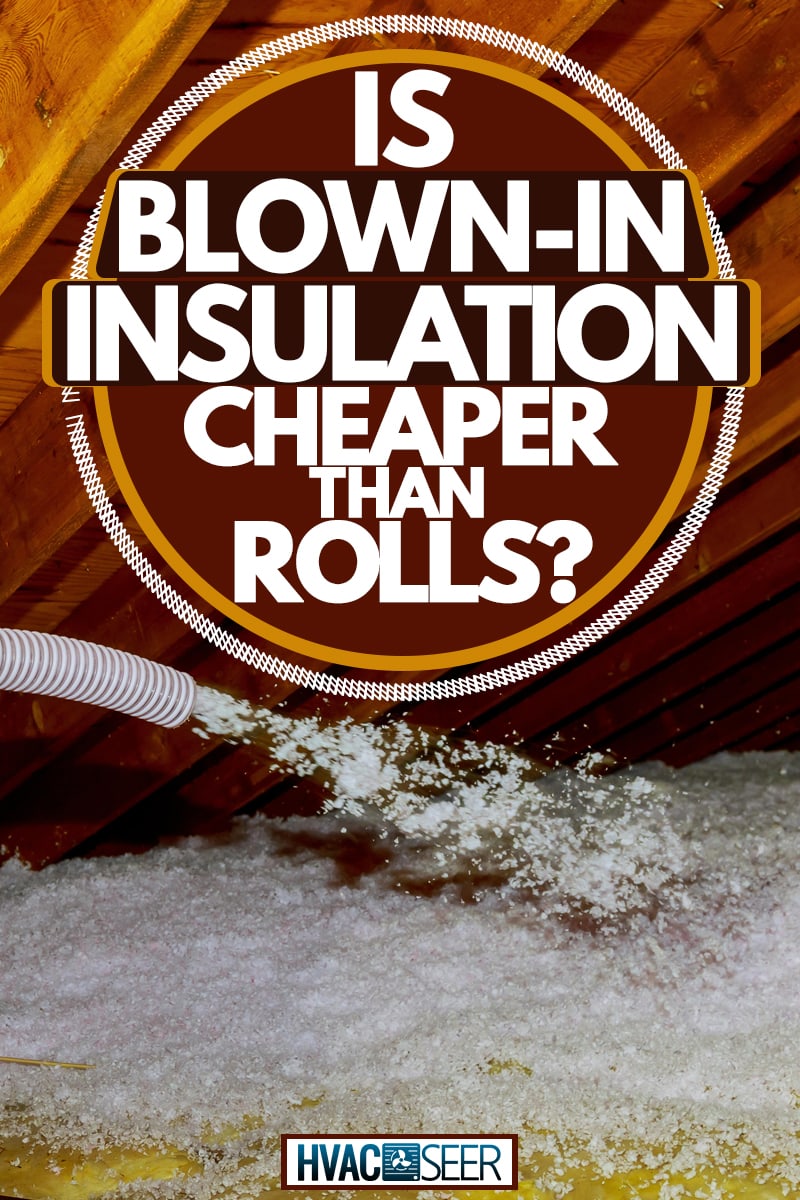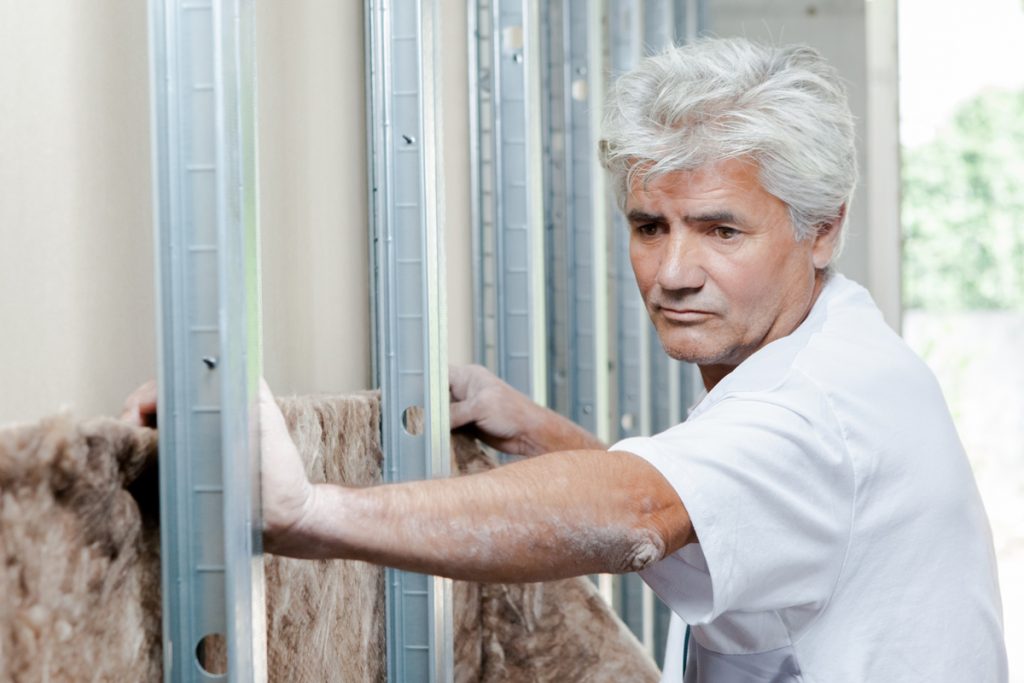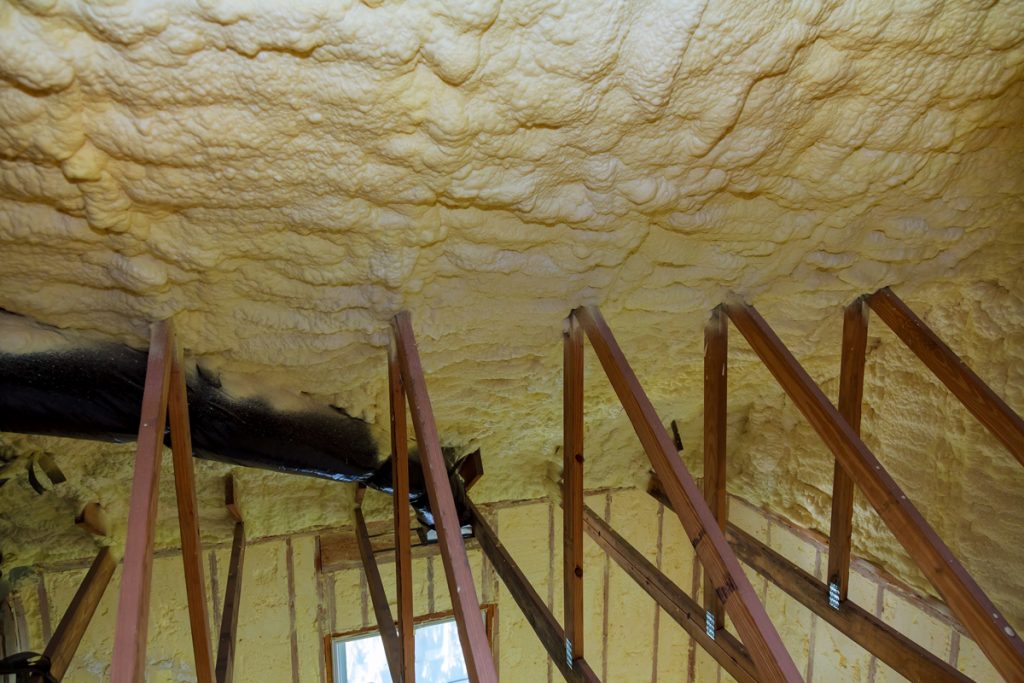There are many things to consider before installing insulation in your home. Your first question is probably related to insulation material and labor costs. It's also helpful to know the differences between the various options for buying insulation for your home. So whether you're thinking about installing your insulation or you're considering hiring a contractor, this thoroughly researched guide should help you become more familiar with home insulation costs.
Blown-in insulation is typically more expensive than rolled insulation. However, this difference isn't by that much. Blow-in insulation can cost between $1 to $1.50 per square foot. Rolled insulation, on the other hand, can be purchased for well under $1 per square foot.
Both rolled and blown-in insulation can provide sufficient coverage for the interior of your home. Now, we will discuss in more detail the typical costs associated with both insulation types.

An Overview Of Insulation Costs and Their Factors
Not only do blown-in and rolled insulations have different price points, but they also have varying project costs as rolled insulation is much easier and quicker to install.
Let's look at the following costs for installing installation in a 1200 square foot attic:
Blown-in Insulation
Material: $1 to $1.50 per square foot
The total cost to insulate a 1200 square foot attic is between $1200 to $1800 for materials.
Rolled Insulation
Material: $.80 to $1 per square foot
The total cost to insulate a 1200 square foot attic is between $960 to $1200 for materials.
Factors affecting how much you pay to insulate a room in your home will include the following: the climate in which you live, the square footage of the room, space accessibility, and home zoning requirements (which will determine the thickness you'll need). Also, note that the thicker the insulation, the longer it will take to install.
When researching various types of home insulation, you'll often come across the term "R-value." An insulation product's R-value refers to its level of thermal resistance. Typically the thicker and denser the insulation, the higher the R-value (and higher price-tag). The R-value needed for your home is determined by zoning requirements mandated by the U.S. Department of Energy.
Is Blown-In Insulation Any Good?
It certainly is. Blown-in insulation is generally made from cardboard and recycled paper products. These products are treated with chemicals such as ammonium and boric acid to make them fire-retardant and pest-resistant.
Blown-in insulation is a great option for irregular-shaped areas in a home that may need insulation. Since the material is blown into these oddly-shaped pockets and tight areas, it allows for better coverage in certain areas of a house. If your attic consists of several nooks and crannies, applying blown-in insulation can ensure that the gaps are filled.
Let's take a look at some of the pros and cons of blown-in insulation:
Pros
- Fits tightly into small building cavities preventing air penetration.
- Made from environmentally-friendly material such as recycled paper and wood
- Matierial is fire-retardant and non-corrosive
- Saves time on installation by not requiring cutting and sizing
Cons
- Requires specialized training and equipment to install
- Can retain water for a considerable period leading to mold
- Typically more expensive than rolled insulation per square foot of coverage
- Can be a messy install for a DIY homeowner
Is Roll Insulation Any Good?
Absolutely. Rolled insulation is probably the most popular choice for homeowners looking to insulate various areas of their residence. It consists of flexible fiberglass blankets that are rolled up and pre-sized to fit between building studs and joists. Rolled insulation is readily available in any hardware store and is the more affordable insulation for both professional builders and DIY homeowners.

Let's take a look at some of the pros and cons of roll insulation:
Pros
- Very affordable and available in various thicknesses
- Easy to install for the typical DIY homeowner
- No specialized equipment needed to install
- Available in sizes suited to fit in-between building framing
Cons
- Challenging to fit inside irregularly shaped or hard to reach spaces
- Can leave gaps around small building components (i.e., electrical boxes, water pumps), causing air leaks
- If compressed, it can quickly and lose it's R-value
Which Is Better Attic Insulation: Blown-In Or Rolled?
Blow-in insulation is typically recommended for attics. Most attics can be challenging to crawl around because of the lack of decking. If this is the case with your attic or if there are no ducts in your attic, blown-in insulation will probably be the best option for you. The biggest disadvantage would be that blow-in insulation is loose and can be messy, which can be a nuisance if you go to your attic often (or are installing it yourself).
How Long Does Blown-In Insulation Last?
Blown-in insulation has a lifespan of around 20 to 30 years before replacement--and sometimes even longer. However, this longevity does depend on the absence of a few factors; let's go over them.
Water Damage
The most common cause of damage to insulation is water damage from a leaky roof, water heater, or busted pipes. Water damage can cause insulation fibers to compress or knock it out of place.
Mildew & Mold
When water is allowed to set on insulation, it creates a breeding ground for mildew and mold. It's essential to replace any areas of damp insulation immediately to prevent mold accumulation (which can also cause respiratory issues).
Punctured Areas
Holes in the roof or damage from home improvement projects can cause damage to the insulation, resulting in punctures. When air can penetrate the insulation, it cannot perform effectively and needs replacing.
Falling Down
Blown-in insulation installed on ceilings, attics, and crawl spaces is known for falling out of place over time (around the 15-20 year mark). In some cases, it may be possible to staple the paper backing back into place, but if it's too damaged, then the insulation will need to be removed completely.

Settling
Material settling is a common occurrence with blown-in insulation. When the insulation settles and is no longer 6- to 12-inches deep as it was installed, it may be time to have it re-installed.
Dust and Dirt Accumulation
Places in the home where insulation is typically installed are also commonly the most dust-ridden. When excessive amounts of dust or debris accumulate on top of the insulation, eventually, it will cause it to compress, and as a result, be less effective.
What Is The Cheapest Attic Insulation?
Fiberglass rolls are typically the cheapest insulation. You'll find that the lower the R-value of the insulation, the thinner the insulation will be, and thus the cheaper it will be. Depending on the area that you're insulating, rolls with as low as an R-13 thickness can be purchased for around $100 at Home Depot and will cover about 163 square feet.
To Sum Things Up
The price that you pay for insulation will depend on various factors, such as where inside the home the insulation will be placed, the thickness of the insulation required for your home, and the accessibility of the area in your home for installation. Once you've determined these things, you're well on your way to choosing the ideal insulation for your home!
Be sure to take a look at our other guides relating to insulation and DIY projects at HVACSeer.com.
